Last August at Eurobike, Power2Max announced their latest power meter – the Power2Max NG. This power meter would be their first unit with dual ANT+/Bluetooth Smart, while also tweaking their underlying measurement design to increase accuracy. While they had anticipated it shipping in the fall, it ended up sliding to mid-winter, with many deliveries not occurring till spring. But these days things are all caught up and thus it’s definitely time for some in-depth review action.
I’ve been riding a Power2Max NG unit on my bike for about a month and a half. Plenty of time to find all sorts of wonky weather conditions as well as indoor trainer tests. And in turn, plenty of time to determine whether or not it’s accurate, as well as how well the new features work.
As always, the loaner unit I received from Power2Max will soon ship back to them. Just the way I roll. Speaking of rolling, let’s get started on this review. First up – unboxing!
Unboxing:
First up is what’s in the box. Now at its core, there’s the Power2Max spider. But what’s in your box may vary slightly based on what configuration/bundle you buy. For example, are you buying it with crank arms? Or did you also buy chainrings? Heck, I think they even sell head units with some of the combos too.
In this case though we’re going to keep it simple and tidy and just unbox the absolute base option. I’ll cover some of those other component requirements in the installation section in a moment. In any case, here’s the box:
For context, the box is not much bigger than two phones side by side. Pretty small actually. If we crack open the box, here’s the parts inside:
These can be very easily summed up as:
A) Power2Max NG Spider
B) Micro-USB charging cable
C) Small quick start guide
D) A pair of green stickers that in that particular placement looks a little bit like…uhh…never mind.
In any case, those green stickers are placed onto the crank spider. You can also order other colors from them as well. Or, do as I did and just leave it all naked. I think it looks cleaner that way.
And here’s the back of the spider:
For completeness, here’s a closer look at both the USB cable and stickers:
Meanwhile, inside the front of the manual, you’ll find stats about your specific unit. This includes initial factory calibration numbers as well as the ANT+ ID and birth date. Mine apparently shares the same birthday as a now much discussed individual in the American political landscape.
Ok, with that unboxing out of the way, let’s get onto the installation.
Installation/Configuration:
Now installation is pretty straightforward, at least if you’ve done crank swaps in the past. The purpose of this section isn’t exactly to teach you how to swap your crankset. Honestly, there are far better YouTube videos for that. Instead, I just wanna cover a few key moments to give you the flavor of this install. A small Costco sample is usually better than an entire dish of it in most cases.
In today’s case, I’d be swapping the spider on the crankset on the right with that of the Power2Max NG, and then removing the Quarq from the bike and putting all the new stuff in its place.
My first step was to get rid of the old crank. So I removed that and my pedals, and then after this photo cleaned up the bottom bracket a little bit too.
Next, it was removing the chainrings from the existing crankset. This would be similar to what you might do if you were just swapping out crank spiders.
Following that I then put the new spider onto the existing crankset:
Then from there, it’s bolting back on the chainrings.
Finally, I slide the axle through the bottom bracket and attach the left crank arm. In this case, I was putting on a Stages power meter on the left side…just cause. Finally, don’t forget to attach your pedals. Also, don’t forget to put the chain on the correct side of the axle before finalizing everything.
And with that, our installation is complete. Now generally speaking for any power meter you install you want to give a little bit of time for things to settle. Not sitting overnight type of time, but actual riding time. This can be rapidly sped up by doing 3-4 quick and hard sprints. This helps to set any bolts and parts that may not be perfectly tight.
After that, do another zero offset (more on that in a moment), and you’re good to go.
General Use Overview:
The Power2Max NG is dead simple to use. For the most part you won’t really need to do much with it, save checking the zero offset every once in a while as well as charging it up. Still, it’s worth going through some of the basics just to cover all the most common questions.
To begin, the NG is the first Power2Max unit to use a rechargeable battery. Previously they used coin cell batteries (CR2450N), which were easy enough to find/use. With the NG though they’ve gone with a micro-USB rechargeable configuration, which aims to get around 150 hours of battery life. The charging port is hidden behind a small rubber stopper located on the front of the crankset:
The underlying micro-USB port is internally waterproofed, so even if you forget to put the stopper back in place, you won’t kill it on a wet ride.
And this is actually really the only thing I don’t like about the NG: The stopper. It doesn’t have any ‘tie’ to hold it to the rest of the crankset, so if you don’t put it back in place perfectly it’ll undoubtedly fall out somewhere in the countryside to never be found again. Further, while waterproofing isn’t a concern, sand/dirt/road grit is. That’s because if that gets in there and you then plug your micro-USB cable in the port, you could eventually damage it.
Perhaps these concerns are overthought, but I just find the port cover flimsy and not well thought through. In any case, I haven’t lost mine yet, but I much prefer the charging cover that ROTOR has implemented on their new 2INPower design. Though, at least with Power2Max’s design it’s standard micro-USB, so no need to have yet another proprietary cable (as ROTOR is).
Note that while charging, the red LED light will blink, and then once complete it’ll stop blinking. It’ll blink green once you remove the power cable (to indicate it’s happy and ready).
The LED status will also actually tell you battery status immediately after turning the cranks upon wake-up. The manual lists the different charge levels:
As an interesting tidbit, you can actually power off the Power2Max NG by connecting it to power for less than two seconds, and then unplugging it again. The company says this is useful for transport to save battery life. To power it back on, you’ll charge it for at least 5 seconds, which then will turn it back on again.
Moving along to calibration, the unit supports doing a manual zero offset. Zero offsets are valuable because they allow you to track what’s going on inside your power meter from a calibration standpoint. While most modern power meters will stabilize themselves with regards to temperature compensation and such, by tracking the zero offset you ensure that if something is amiss you catch it before it impacts your training/racing. It’s sorta like that engine temperature gauge on your car – you can ignore it 98% of the time, but the 2% of the time that it lights up – you probably want to do something about it (and no, putting electrical tape over isn’t the right something).
For the NG unit you’ll simply ensure you’re not clipped in, and then press the calibrate button on your head unit.
When it’s done it’ll shoot back a calibration value. You’re mostly looking for this value to stay relatively stable.
Note that the Power2Max NG will automatically perform a zero offset behind the scenes anytime there’s no force applied to the unit for at least two seconds. This could be at a stoplight or otherwise stopped pedaling.
Of course, I jumped a little bit ahead here in that I talked about calibration with a head unit prior to pairing. For pairing, you can pair on both ANT+ & Bluetooth Smart. For example, here is it paired on a Garmin head unit via ANT+:
Note that the ANT+ ID is actually written along the edge of the crankset, so you can double-check that at any time should you need to figure out (or confirm) which ID is yours. You can see above how the ID shown (44995) matches that of below.
You can also pair via Bluetooth Smart, in my case I was able to confirm pairing with the Polar M460, Stages Dash, and Garmin Fenix 5. One thing to be aware of is that the Power2Max NG has a bit of a pairing mode, this means that for the Bluetooth Smart side of things you have one minute upon powering on the unit (pedaling) for Bluetooth Smart head units to find the NG unit for a new pairing. If you were to try and pair a head unit 10 minutes later instead, it actually won’t find it.
It’s no big deal, but just something to be aware of (and perhaps will save someone some confusion down the road). For ANT+, it just broadcasts constantly and so any ANT+ unit will pick it up as a new pairing at any time.
It should be noted that I did have a single ride where the Fenix 5 paired via ANT+ did experience drop-outs. This is likely less the Power2Max units fault and more the Fenix 5’s fault, as there have been issues with ANT+ reception for some models and some accessories. I’ve generally had pretty good luck though with the Fenix 5 for me and all other cycling power meters (not so for the Stryd running power meter though).
When it comes to data recorded by the head unit, it’ll vary by protocol. Here’s what each supports on the NG:
ANT+ Power (total)
ANT+ Power Balance
ANT+ Cadence
ANT+ Pedal Smoothness (both legs together)
Bluetooth Smart Power
Bluetooth Smart Power Balance
Bluetooth Smart Cadence
Bluetooth Smart Torque
Bluetooth Smart Pedal Smoothness (both legs together)
As an example, here’s a file recorded with an Edge 520 via ANT+ on the Power2Max NG. And here’s some screenshots from that of the relevant data sections.
Now before we dive into the power meter accuracy pieces, it’s notable to point out that at this point there is not yet an app for the Power2Max NG unit. That was certainly a major piece of having Bluetooth Smart, which would enable you to update the unit’s firmware more easily via your smartphone. Other manufacturers like ROTOR, PowerTap, and Quarq also offer more detailed diagnostics and related data via the smartphone app.
Power2Max says it’s coming though, likely this summer for the Android version. Though there isn’t yet a specific timeline for the iOS version. At the moment it’s not a big deal either way, since you can still calibrate and such with any head unit.
Power Meter Accuracy Results:
I’ve long said that if your power meter isn’t accurate, then there’s no point in spending money on one. Strava can give you estimated power that’s ‘close enough’ for free, so if you’re gonna spend money on something it shouldn’t be a random number generator. Yet there are certain scenarios/products where a power meter may be less accurate than others, or perhaps it’s got known edge cases that don’t work. Neither product type is bad – but you just need to know what those use/edge cases are and whether it fits your budget or requirements.
As always, I set out to find that out. In power meters today one of the biggest challenges is outdoor conditions. Generally speaking, indoor conditions are pretty easy to handle, but I still start there nonetheless. It allows me to dig into areas like low and high cadence, as well as just how clean numbers are at steady-state power outputs. Whereas outdoors allows me to look into water ingest concerns, temperature and humidity variations, and the all important road surface aspects (i.e. vibrations). For reference, the Power2Max NG has a claimed accuracy rate of +/- 1%. It also does not require any magnets for cadence, while also automatically correcting for any temperature drift. Both of these are pretty common though on most power meters these days.
In my testing, I generally use between 2-4 other power meters on the bike at once. I find this is the best way to validate power meters in real-world conditions. In the case of most of these tests with the Power2Max NG I was using the following other units:
PowerTap G3 hub based power meter
PowerTap P1 pedals based power meter
Stages left-only power meter
Tacx NEO Trainer
Elite Direto Trainer
In general, my use of other products is most often tied to other things I’m testing. Also, when it comes to data collection, I use a blend of the NPE WASP data collection devices, and a fleet of Garmin head units (mostly Edge 520/820/1000 units).
Note all of the data can be found in the links next to each review. Also, at the end is a short table with the data used in this review. I’ll likely add in other data not in this review as well once I finish consolidating that data. I’m a bit behind on getting data off some of my head units into folders.
With that, let’s get right into it and start with analyzing an indoor trainer ride. This one actually just a few days ago as I tried out the new Elite Direto trainer. This was done on Zwift, and the set can be viewed here.
So at a high level you can certainly see things look pretty darn good between the three units from an agreement standpoint. Be it the more constant sections like 6 minutes till 11 minutes, or be it the sprints. Let’s dive into those sprints a bit deeper, as reaction time is a super-important part of a power meter.
The above chart is at 3-second smoothing, so that helps to make it look a bit cleaner (easier to read), while concurrently causing some slight differences in how the data might appear. So here’s also the 1-second version:
Any time you talk 1-second maxes you get into the scenario of how to deal with different recording/transmission rates. The Direto and Power2Max NG are incredibly close here (2w), with the P1 a bit more offset.
Looking at another sprint a short bit later, you see the reality of those slightly different recording/transmission rates. All three power meters find the same 1-second max power (within a couple watts), but the NG’s head unit happens to show that 1-second later. Again, this is often just a case of transmission and recording variances.
So indoors I’m not seeing anything odd. After having a different recent power meter show some oddities indoors-only, it’s something I always want to check on at least a few sessions.
Most power meters these days, if they have problems, tend to have those problems outdoors. So let’s spin outside and look at some data there.
Wowzers.
Yes, that’s a lot of ups and downs there, but what’s key is that the three units match consistently – which is why you mostly only see one line from this 50,000ft view.
(Minor note: If looking at this specific set linked above, be careful about looking at the Mean/Max chart, as I mis-pressed the start button on the unit with the P1 pedals, thus, the first 8 minutes are missing, which will impact the mean/max chart, as well as averages. No biggie though for what I care about here, we’ll just ignore that chart for this ride.)
So let’s get straight into some surges. You can see in the minute or so leading up to this that all three power meters track very closely to each other, with nothing of concern. As I then ramp up the power you see all three again track very closely, right up to the peak sprint in which all three are within a 1.7% spread of each other. Given they’re measuring at different places with slightly different transmission/recording rates, that’s pretty darn solid.
While we’re looking at this set, let’s look at cadence for a moment. In this particular set we’re comparing accelerometer cadence between two units (P1/NG), and then the G3 which is estimated (and thus less reliable for cadence specifically). I’ve zoomed in on a random section just to look at it a bit more.
You can see that all three align nicely here (across a variety of pavement types), except when the PowerTap G3 comes off a sprint, which is a bit of a well-known cadence ‘challenge’ there that it struggles with.
Next, switching over to one last set, let’s compare some more data.
Now, there’s a lot of things I could look into in this set (and honestly, all of it’s fine), but in particular I found a moment around the 36-minute marker kinda interesting. I was coming off of a dead stop here, and thus you see me ramp up from 0w to 836w over the course of about 8-10 seconds.
You see some slight variations between how these two ramp up. The NG ramps up a bit more smoothly than the P1 does. Whether or not this is true, there’s really no way to know. But what we do know is that both of them agree about 6-7 seconds later and match right up to the max point, where they match within 1w. One flippin’ watt.
Heck, even the next second the two units are only apart 3 watts. Which is also really tricky to nail from a transmission/recording standpoint. Further, as I fade on that sprint you can see both of them track beautifully all the way down to 0w again.
And we see the same again later on from a 0w to 500w sprint. Some very slight couple-watt variations between the two as they climb and peak out, and then virtually matching (actually, the very next second they match precisely).
At this point, it should be pretty obvious that things look very good across the board against other units that have been well proven as accurate.
Of course, Power2Max has been producing very accurate power meters for years. But anytime you shift the underlying technology as they did with the NG (in pursuit of higher accuracy), you have to worry that companies make missteps. For example, when Quarq made similar steps to Power2Max this winter, they had a short-lived but present bug on sprint accuracy. It’s these sorts of things that companies have to worry about. Of course, Quarq fixed that within a few weeks, and we haven’t seen any similar (or otherwise) complaints about the new NG units since they started shipping this winter as well.
(Side note: All of the sets are analyzed using the DCR Analyzer. This allows you to open the sets up yourself, look at the data, and even download the original data files for your own comparisons and analysis. These days you can also use the DCR Analyzer for your own comparisons, more info here.)
Power Meter Recommendations:
With so many power meters on the market, your choices have expanded greatly in the last few years. So great in fact that I’ve written up an entire post dedicated to power meter selection: The Annual Power Meters Guide.
The above-noted guide covers every model of power meter on the market (and upcoming) and gives you recommendations for whether a given unit is appropriate for you. There is no ‘best’ power meter. There’s simply the most appropriate power meter for your situation. If you have only one type of bike I’d recommend one power meter versus another. Or if you have different needs for swapping bikes I’d recommend one unit versus another. Or if you have a specific budget or crankset compatibility, it’d influence the answers.
Now since the guide came out this past fall, there really hasn’t been any major entrants in the market that weren’t already covered in that post. However, I have released a number of in-depth reviews of new power meters since then. So here’s the quick and dirty version of what’s been released review-wise since that time:
A) 4iiii Precision Dual System In-Depth Review
B) WatTeam PowerBeat Gen2 Dual System In-Depth Review
C) Quarq DZero In-Depth Review
D) ROTOR 2INPower In-Depth Review
Given we’re into summer now (in the northern hemisphere), I do not expect any major new power meter announcements until the end of August, when we start Eurobike and then shortly thereafter Interbike. It’s still possible to see rebranding type announcements this summer.
As usual, expect my full power meter recommendations guide shortly after/around Interbike.
Summary:
With the Power2Max NG the company has continued to incrementally update their power meter lineup with a refreshed model that offers new features considered baseline for today’s cycling head unit world – notably Bluetooth Smart connectivity. The shift to a rechargeable power meter matches some of the industry trends of newer power meter companies, though I think from a consumer standpoint won’t have any real impact. The battery life is long enough that it’s in the same range as coin-cell batteries, and the recharging nature/cable is pretty easy and simple.
Now with these shifts, Power2Max has raised the prices on their NG line quite significantly over the Type-S lineup. In fact, the NG was introduced at a 43% premium over the Type-S (when Power2Max introduced the Type-S over its previous generation, it was ‘only’ at a 27% premium). Of course, companies can charge whatever they’d like – that’s great. But the reality is that you have two comparable and reputable products in the Quarq DZero and PowerTap C1 costing ~$300 less, and that ignores other competitors like the 4iiii dual, BePro, or Garmin Vector 2 at nearly identical price points.
Still, Power2Max appears to have done well here – as they were in a backlog for much of the winter. And from a technical standpoint they’ve done well too. I’d be happy to run an NG unit on my bike full time, and would have no concerns recommending it to others.
With that – thanks for reading!
FOUND THIS POST USEFUL? SUPPORT THE SITE!
Hopefully, you found this post useful. The website is really a labor of love, so please consider becoming a DC RAINMAKER Supporter. This gets you an ad-free experience, and access to our (mostly) bi-monthly behind-the-scenes video series of “Shed Talkin’”.
Support DCRainMaker - Shop on Amazon
Otherwise, perhaps consider using the below link if shopping on Amazon. As an Amazon Associate, I earn from qualifying purchases. It doesn’t cost you anything extra, but your purchases help support this website a lot. It could simply be buying toilet paper, or this pizza oven we use and love.

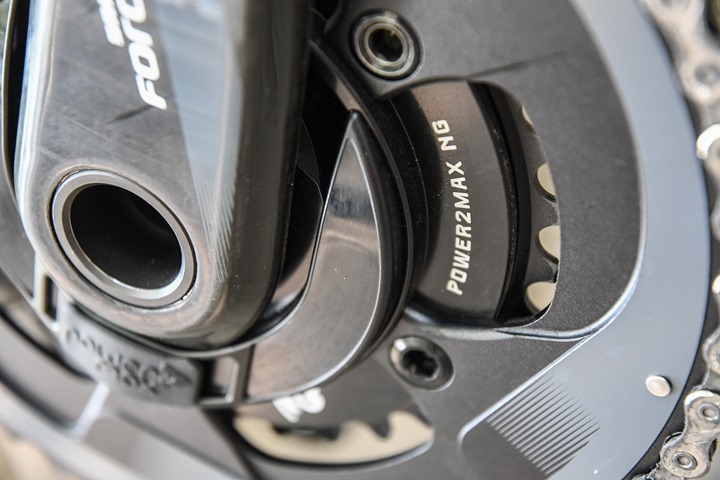

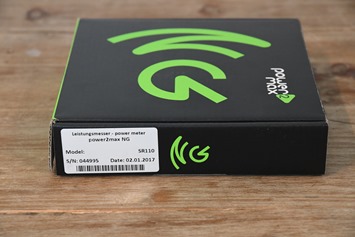

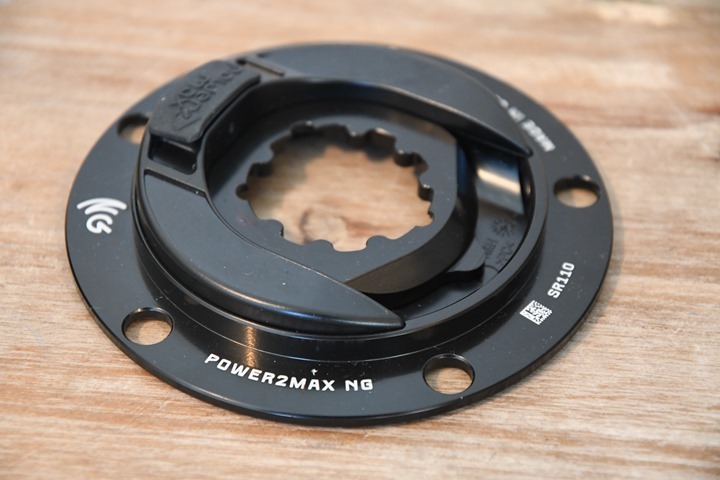
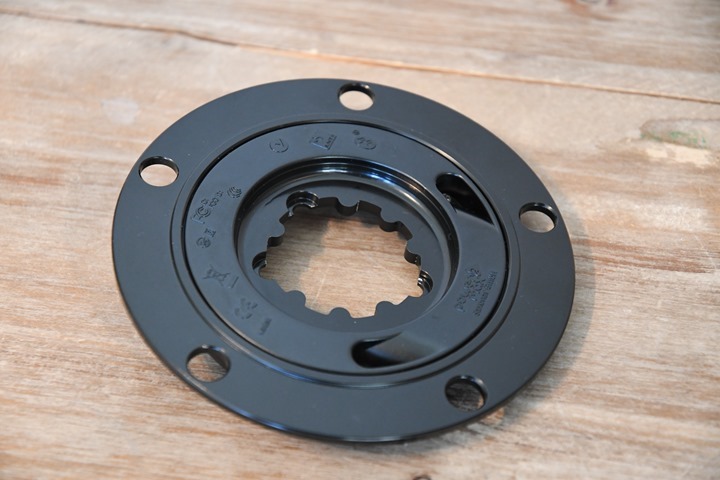

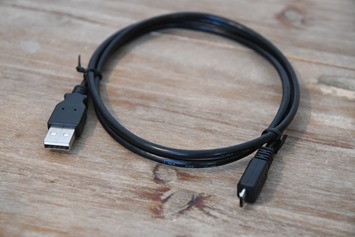
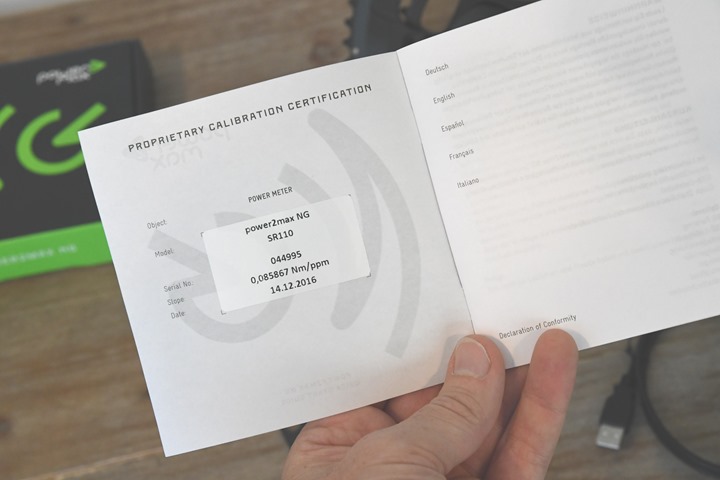
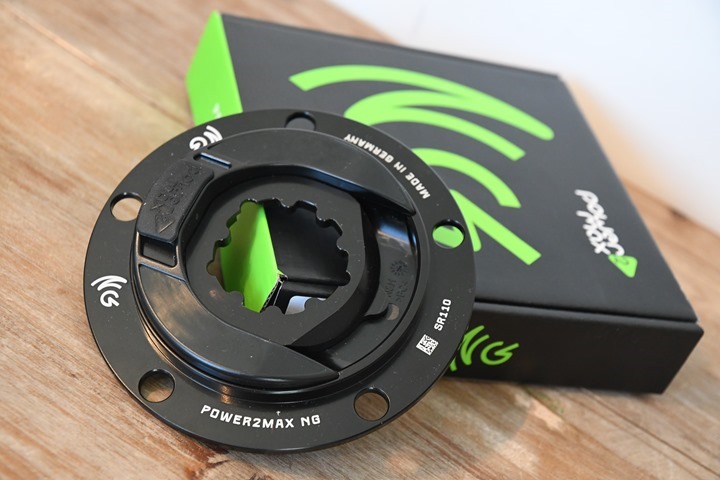
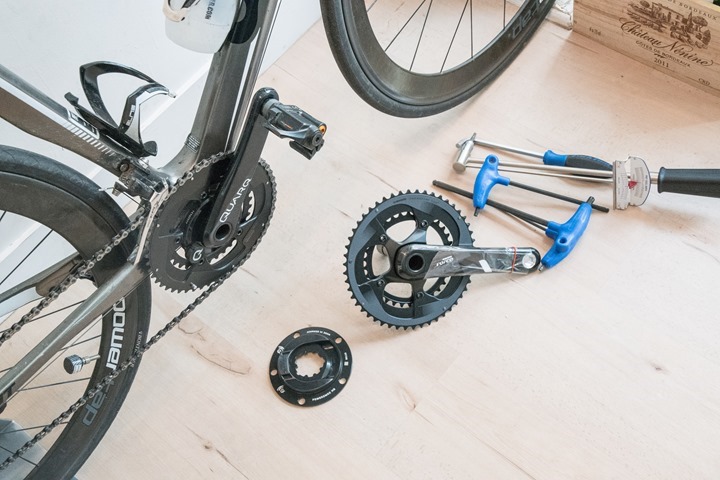


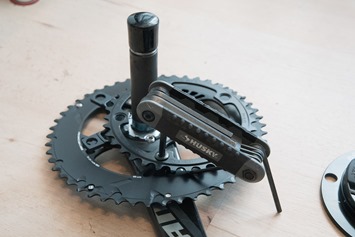
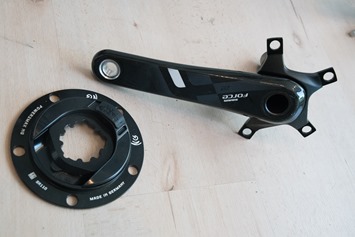
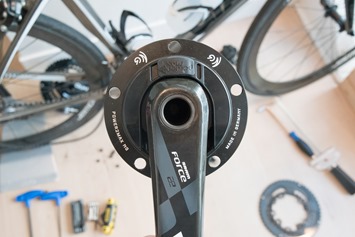

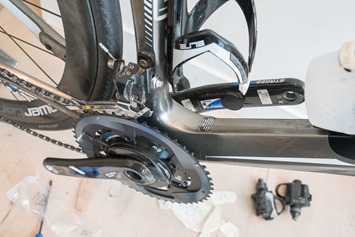
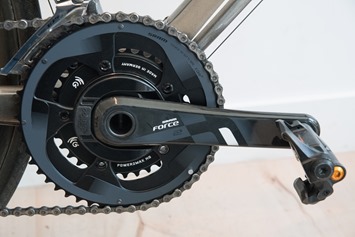
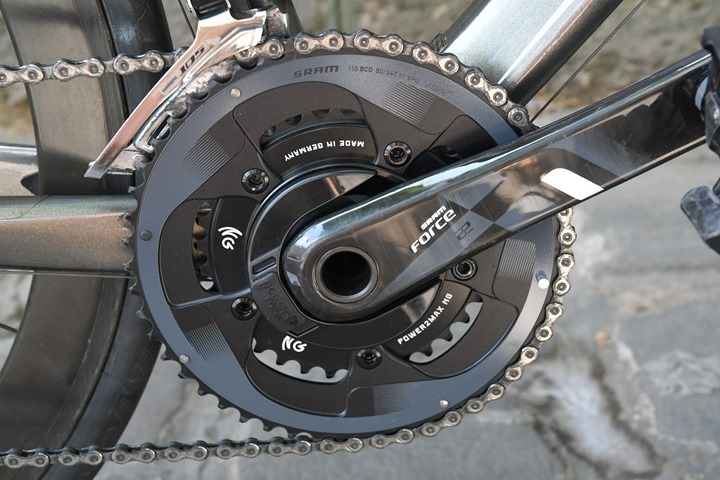
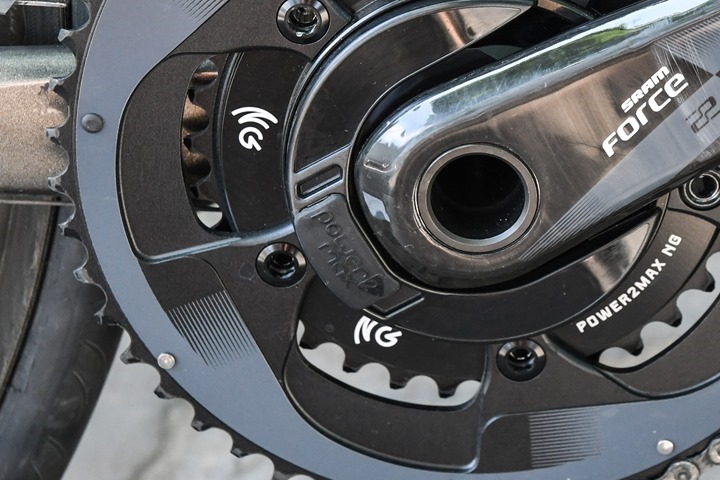
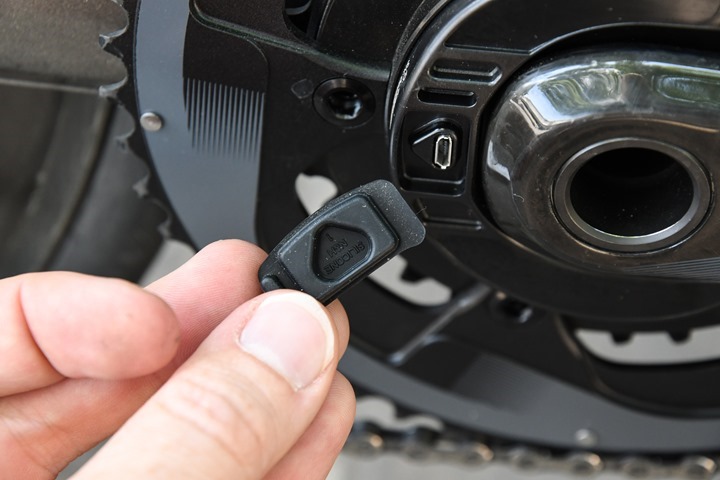
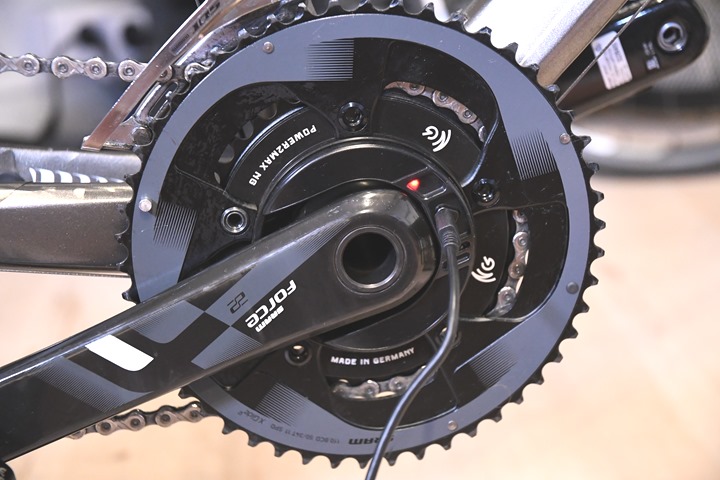

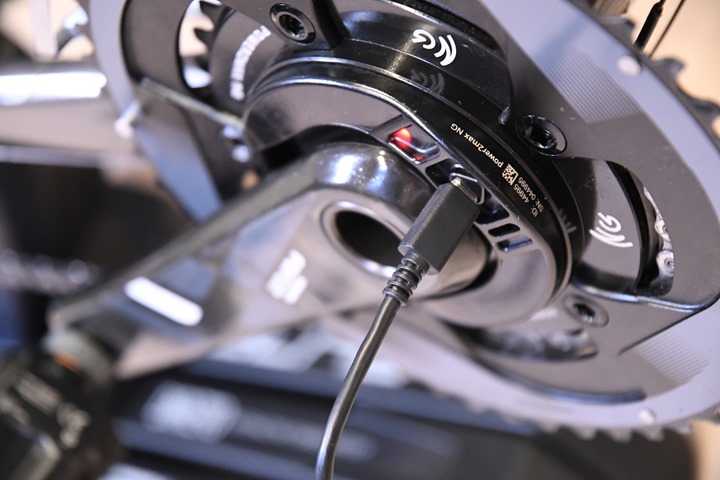
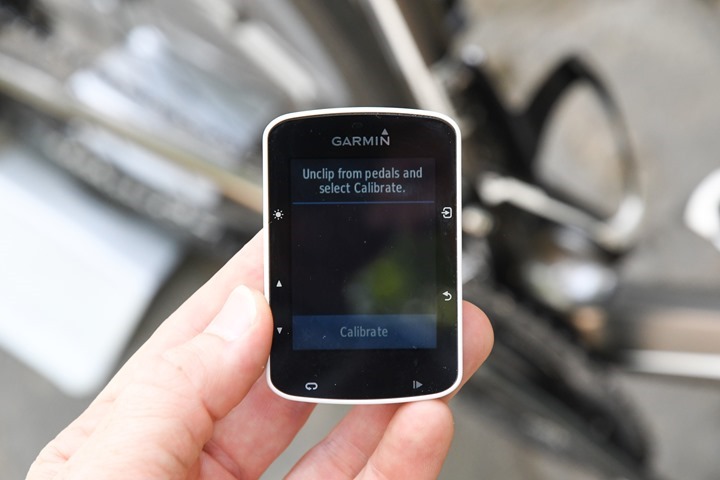
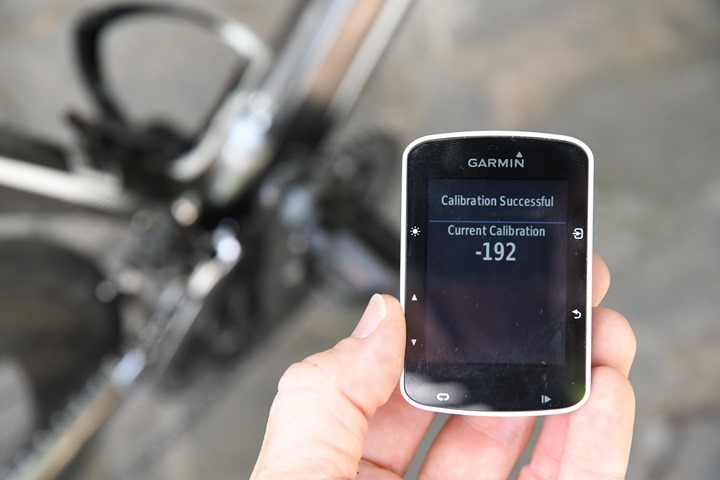
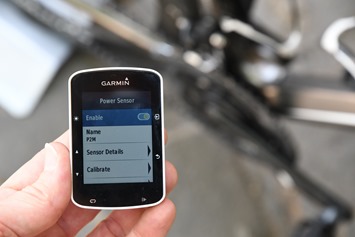
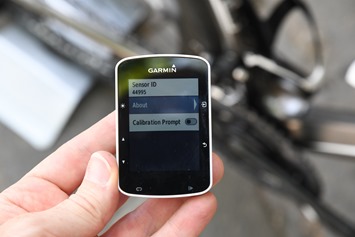
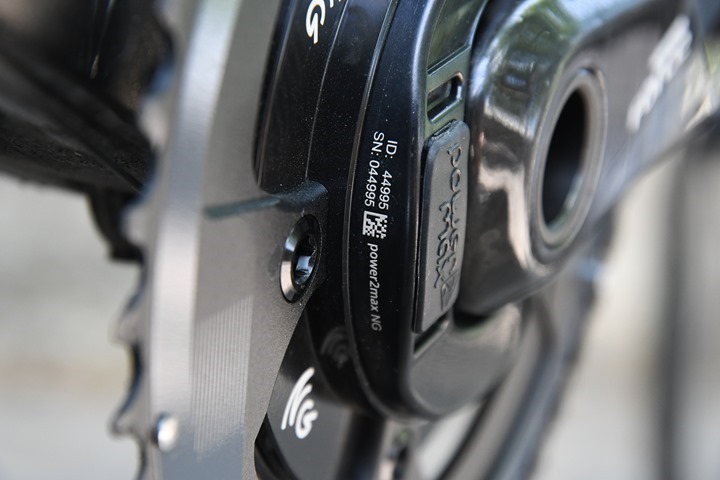
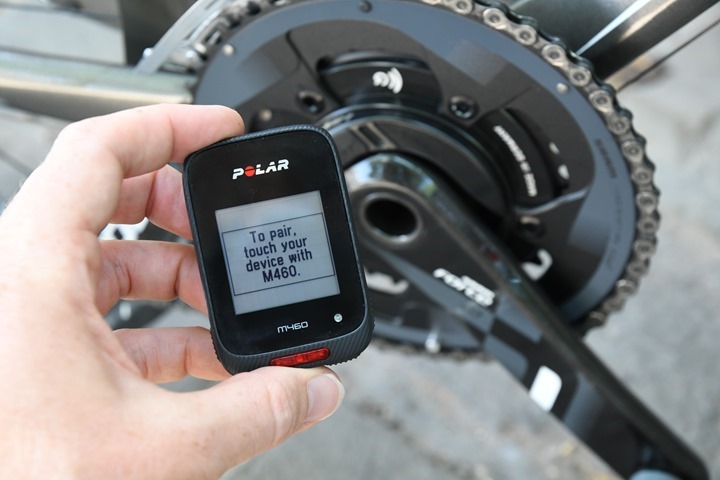


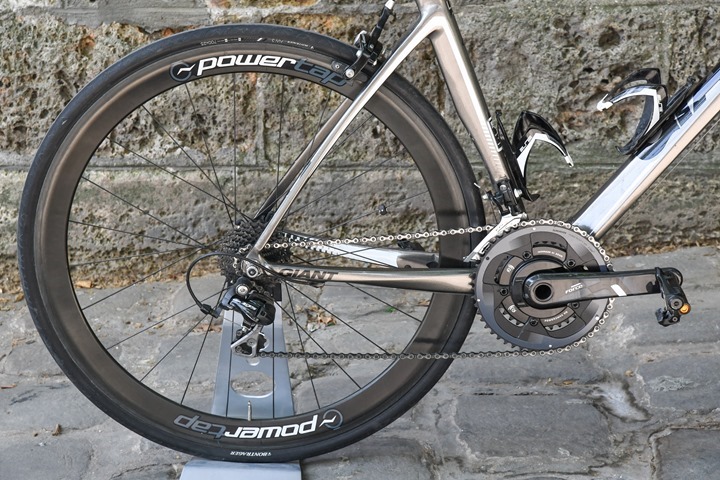










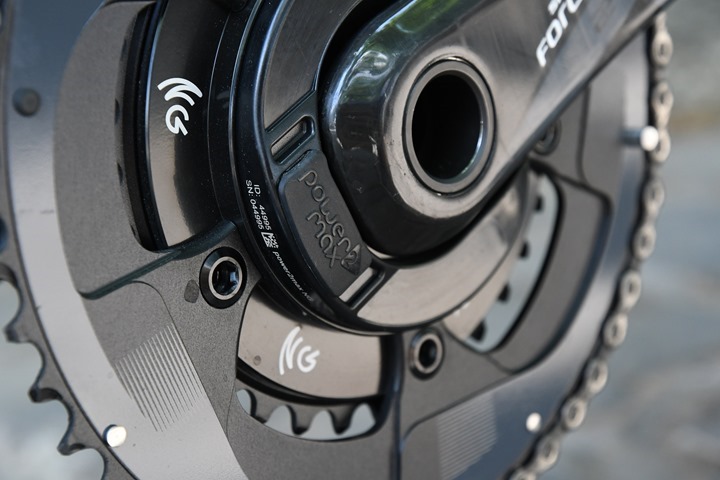




















Just a small error: “Previously they used coin cell batteries (CR2032)”, instead they use (slightly harder to find) CR2450N batteries..
Good point. Forgot about those Renata batteries…
The Type-S already had the Renata batteries..
Bonjour,
J’hésite entre le P2M NG et le rotor 2in power.
Quelle serait votre recommandation ?
Merci pour votre réponse et vos supers articles
The ROTOR 2INPower will give you more data, such as accurate left/right balance data versus the estimated left/right data from the Power2Max NG. You’ll also get a boatload more data via the apps they have.
Inversely, you’ll likely save a bunch on the NG compared to the ROTOR – so you’d want to decide whether that ROTOR data is actually useful to you or not. Also, I didn’t have indoor accuracy on the NG like I did on the ROTOR.
I’d argue that for the majority of folks, the NG is probably the better all-around option. But to each their own.
Thanks a lot !
A couple of questions on the L/R balance:
– How much different is actually the left/right estimated data compared to accurate data?
– if left/right balance is one of the most important elements that I look for in a power meter (coming back from multiple knee surgeries and my L/R is really off) should I go for a power meter with accurate data (Rotor) or do other power meters (P1 pedals, Quarq DZero) provide data accurate enough?
– besides Rotor 2inPower is there any other power meter that provides accurate left/right numbers?
Thank you!
A) It’ll vary depending on your pedaling style. Remember, it’s actually measuring your pulling up/pushing down, but pretends to split it as left-right. Sometimes that gets close, othertimes it’s 100% off.
B) If you’re looking for it for recovery purposes, I’d strongly recommend going with something that can properly determine that data (PowerTap P1, ROTOR 2INPower, Garmin Vector, Infocrank, 4iiii Dual). I don’t believe other units would be accurate enough for what you want.
Bit confused here. I can’t see any of the “normal” UK bike retailers selling this. Also it does not appear to work with Shimano cranks so that kind of rules it out for me as a sensible option. And what is the relationship with this and the FSA Powerbox which in your current meter guide if you imply are the same? However link to power2max.com has one with FSA cranks.
In a nutshell, the PowerBox is built on the Power2Max Type-S generation unit, except with Bluetooth Smart also baked in.
I believe Power2Max only sell direct, same deal as Canyon, so you have to buy through their website
As mentioned you have to buy a Power2Max device direct from them. You can versions for 24mm diameter spindle cranksets which are a direct swap with Shimano cranksets. I bought one with FSA cranks and 24mm spindle to fit my bike which previously had a Shimano crankset. That way I didn’t have to muck about changing bottom brackets.
Correct.
It’s an interesting paradigm. I think it works well for certain products, but not as well for others. I think the consumer also has to feel like they’re “getting something out of it”. For example, with Canyon the consumer feels like they’re getting a better deal on a bike – or getting higher components for the same price.
With power meters, that can work too *if* (again) the consumer is getting a better deal. For example Stages started out that way – only selling online through their site and a handful of local dealers. No dealers were allowed internet sales. That worked well enough for them in the beginning because the price was exceedingly low, and they got a tidal wave of interest due to Team Sky on top of that. But these days, they’ve expanded into 3rd party online sales – likely as a results of increased competition.
At one point Power2Max actually did work with 3rd party retailers – it’s how they got their start. And I wonder if the power meter environment today really lends itself to the direct-only model anymore. Especially for crank-region type products. For pedals (i.e. bePro-Favero/P1/Vector/etc…), it’s an easier jump because 95% of consumers don’t need a bike mechanic to install those products.
But with something like a crank-region (crank arm/bottom bracket/spider/etc…) type products, many consumers aren’t comfortable installing that on their own (some readers here might, but most aren’t). They lean on bike shops for that installation. Of course, bike shops want a piece of the selling-pie, and will likely instead recommend products they can…sell. Which leaves them with recommending every other power meter on the market.
I occasionally talk about my dislike for ‘exclusives’, no matter which side of the coin one is on. But my dislike actually stems from a very simple business basics concept: Never artificially limit your customer base. In doing so you instantly cap your potential sales. From a business standpoint, I’ve never quite understood that.
Power2Max has done well historically with their products, but they’ve also been priced far more competitively than the NG is – so they were akin to Canyon. Consumers got more for less. But just like Stages and changing their sales model, times have changed in just the last few years.
Just my two cents.
It’s a couple of weeks that I’m using a FSA Powerbox and works very well !
It’s labeled as “Power2Max NG eco”
Funny.
Yeah, the PowerBox has the accuracy, battery, and strain gauge design of the Type-S. But I can see why it might show up as an NG because the communications side is more akin to the NG.
Fwiw – a PowerBox is sitting in an unopened box about a meter from me. It’s next on the power meter review queue, now that this NG has cleared my plate.
I’ll wait for your review, do you have any idea how much will cost the upgrade of the Powerbox scheduled for September ?
No, I’ve asked a bunch as well, still TBD. Kinda seems like an important detail people would want to know. Even just a rough range would be great – i.e. roughly $50 or roughly $100 or roughly 1 Million Dollars.
I contacted support at Power2Max recently to find out which models were compatible with the Shimano 105 group on my Giant Defy 1 Disc. They responded saying that my bike has a 5-bolt pattern, so I would need a new crank because the one that came with my bike has doesn’t have a removable spider. However, the P2M models for the Rotor 3D crank are compatible with the bottom bracket on on my bike, so as long as I swapped out the cranks I would be fine.
In short, you can use either the NG or Type-S on bikes with Shimano groups. Just contact support before you buy and sort it out – support@power2max.com
Ray – on the subject of calibration or performing a zero offset, I have a few questions.
First, you say that you should look for the calibration to stay relatively stable. I have a power2max type s and I typically see calibration values of ~1495 (cold temps) to ~1455 (warm temps). The temperature correlation is interesting to me, does that meet the definition of “relatively stable?”
From what you’ve written today, it sounds like the only reason to perform a zero offset is to verify that something drastic hasn’t changed with the power meter since it was used last. In a sense, the zero offset isn’t actually doing anything, just allowing you to see the value? If that is the case, say I ride monday through friday.
I perform a zero offset on Monday, Tuesday, Thursday and Friday, on Wednesday I forget. As long as the other four values are close together, there is no reason to question Wednesdays data?
Does this mean that with powermeters like the power2max NG (and type s?) there is no benefit to performing a second zero offset 10 minutes down the road?
One last temperature question. Doe these units perform temperature compensation on the fly, so, it isn’t tied to performing a zero offset?
“One last temperature question. Doe these units perform temperature compensation on the fly, so, it isn’t tied to performing a zero offset?”
I know that Stages do something like that. ATC (Active Temperature Compensation) they call it. link to stagescycling.com
(Not ignoring you, just getting some deeper clarity on how precisely this works. I roughly know how it works, but just trying to understand a bit better from P2M…should have it all sorted by Friday sometime.)
Thanks Ray!
Any idea what constitutes a “normal range” for the NG’s zero offset? I notice yours is reading -192, which worries me because mines tends to be around -75 most of the time.
There’s no specific ‘normal’, each unit is different. You’re mostly looking for stability within that range, with changes largely driven by temp.
Mine seems to calibrate at 155-160 (no minus sign, so presumably +160?). Seems to be working fine, so I assume there is quite a large range.. ;-)
Does anyone else find that it’s difficult to do a calibration / zero offset when the unit has just been activated (green light still flashing)? With mine a get a calibration error 90% of the time when the light is flashing, but once it’s stopped (still connected but not searching) it works every time. No big deal, just curious if it’s just mine!
Yeah, mine also gives a calibration error if I try to do a zero offset as soon as it wakes up. I think that’s normal.
Just a typo I think. You list Power2max as an other manufacture (compared to Power2max).
“Other manufacturers like ROTOR, Power2Max, and Quarq also offer more detailed diagnostics”
Thanks, meant PowerTap.
Is it possible to glue one side of the rubber cover in place as some Garmin 705 owners did with that computer in order to solve the lost cover problem?
Sort of related question: what are your thoughts on the Swiss study of power meter accuracy that was done earlier in year? link to forum.slowtwitch.com
I think the glue would eventually pull off. Just my guess.
The Swiss study wasn’t bad. I chatted with them a bit about it. The only concerns were that they didn’t really use the latest gear (kinda a random collection of older stuff), and they didn’t list exactly what models they used. So you didn’t know if it was last years model or 5 years ago. That actually matters a bunch when you look at how companies have integrated new changes to address various problems.
Still, I thought their underlying methodology was interesting.
Which one to choose between type s and NG. Plus and minus. Is it a must to pay more for the NG. Type s a better value? Thanks
I’d look at what type of head unit you use. If you use and plan to continue using a Garmin device, then honestly the additional Bluetooth Smart connectivity likely won’t matter to you. I don’t think the accuracy changes will matter to most people (my guess).
Recharging vs coin cell is really more of a preference thing. One could go either way on it.
Do you think i will have to remove the chainring on a cervelo r5 2015 for a batterie replacement? Thanks.
I’ve a type s on an r5, yes you need to drop the crank out to change the batteries. Easy if you’ve got the tools, a pain if you’re travelling.
Yes Hi Ian, coincidentally I am using a Type S with R5, I just use a long and thin screwdriver and able to change the battery without removing the crank. There is one spot, one spot only you could do that and I believe it’s under the down tube. Turning the bike up side down is a must.
In comparison to the Type S, does the NG render cadence and power data faster? I have been using a Type S for the last few years and it is very reliable. Power2max says the NG will render cadence faster. Not sure if it is in the same ball park as some magnet based power meter.
I’m not sure I’d say it’s any faster. It seems to match everyone else spot-on from a instant power/cadence standpoint. And realistically all these units are limited by the ANT+/BT spec update rate anyway. Sure they’re delivering data upwards of 4 times a second, but your Garmin/Polar/Whatever is only showing once per second.
Hi, I’m confused. Does this PM have anything in common with FSA PowerBox which use also power2max ?
link to bikeradar.com
See up above, this portion of the thread where I detail it: link to dcrainmaker.com
More innovations have been announced for NG:
Dual ANT+ & Bluetooth Smart broadcasting
Accuracy +/- 1%
USB battery power
Possibility for firmware update
Mobile Apk
Torque efficiency
Pedal smoothness
In your review you mentioned dual ANT+ & Bluetooth, accuracy and USB battery power, but we have not heard any words about possibility for firmware update, for mobile apk, for torque efficiency and for pedal smoothness metrics.
The high price for the new product was connected to all these possibilities, but I do not see no one on my unit.
I have NG and Garmin 520 and I do not have possibilities to see torque efficiency and pedal smoothness, there have not any mobile apk yet, and no possibilities for firmware update.
These are all unfulfilled promises from Power2Max.
Hi, tnx for reply that’s sound not good all those ’empty promises’. Is there any good alternative to fsa power box for my shimano 5800 (11 speed, 52/36, Focus)?
I’m not sure I follow all the things you’re saying they’ve promised or that are missing in the review, since I actually touch on all those things in the review.
RE: Pedal Smoothness is there. You can see it on my Garmin Connect activity (recorded on an Edge 520 mind you). Torque efficiency is interesting. We were trading e-mails about that toady actually. It shows up on GC, but not properly. Power2Max says it shouldn’t be showing up at all, and they’re not sure why the Garmin is recording empty data there. I’m going to play middle-man and see if they can sort it out, though I’d hedge 80/20 that Power2Max is doing something slightly out of spec that Garmin is stumbling on (given that everyone else in the industry does it correctly). Either way, they never actually promised torque efficiency.
RE: Mobile app – As noted in the post they plan to release Android this summer, and iPhone later (TBA/TBD). That includes firmware updating capabilities (as also discussed in the review).
Hi, so you currently recommend FSA power box in my case. I was thinkig to buy one side stages but heard a lot of not so good stuff..
As far I understand main dissadvantages are: 2% tolerances, high usage of battery(is this really confirmed), no possibility for usb charging, currently no mobile application which means no firmware update, no bluetooth support etc. is there anything similar on market for comparable price (with ratio left/right etc.)?
I haven’t started testing on the PowerBox yet. I’m hoping to get it installed on my bike this weekend. But, knowing what I know, I’d likely recommend it over any single-sided solution (ala Stages/etc…).
I don’t see high usage as batteries as a thing. I’m not sure where that’s coming from. It’s basically on par with every other power meter out there.
Other power meters in the same rough price range and similar design include the PowerTap C1, and Quarq DZero.
Hi, why to buy “one side” option if you can add little bit more for both sides and have several other benefits? Sorry to ask that but I’m rokie at power meters.
What I’d like is to invest as minimal as possible to get average quality and somehow universal solution (ALU version). Currently I have shimano 5800, 11 speed 52/36 and garmin 1000. In one year I will upgrade to new bike with shimano dura ace or ultegra, so what to choose in that situation(perhaps power tap c1 as I dont neet to buy crank set as it fits to current 105 and also perhaps future dura ace or red etc)? As I’m in EU is also question of service etc. What I really want is to have torque efficiency and pedal smoothness.
As i just read it out , power tap c1 is not compatible with shimano 5800 11 speed and also not dura ace 9000, wow?!?
link to s.wiggle.co.uk
I’d look at my power meter guide here as a starting point: link to dcrainmaker.com
I wouldn’t put much value in torque efficiency or pedal smoothness. I’m not aware of any coaches or athletes that train by that metric or otherwise use it beyond saying, ‘Oh, that’s nifty.’…and then taking another bite of a cookie.
The thing to keep in mind about crank-sets (ignoring shifting), is that by and large they’re cheap compared to power meters. So that’s why some power meter companies are just baking them into their pricing and you get a new one (see 4iiii for example).
Any news about android app for P2M NG, please.
Hello DC, did you find out what is going on with mobile app? They’ve already had to released it.
I do not understand, they developed app, but they do not want to publish it. I wonder if this is part of some sales strategy?
There is now a beta android app.
link to apps.power2max.com
Yep, thanks a lot.
Hi, Where do you see the Power Smoothness in your EDGE 520 picture? It only shows L/R. Or am I missing something?
…”RE: Pedal Smoothness is there. You can see it on my Garmin Connect activity (recorded on an Edge 520 mind you).”
Is there any word on a MTB version?
P2M has not been offering any Single Type S MTB models for months now (in their web shop). Seems their selling of their remaining stock (apparantly only duals still in stock). Word had it that new MTB models would be offered this summer.
To anwser my question: NG MTB versions are scheduled for Eurobike. Single ring versions will work with boost and non-boost through adapters. This is clearly an advantage over the competition.
As usual, there is no better location for accurate and unbiased evaluations and reviews. Thanks for always being reliable and honest! Cheers!!!
Hi Ray, I notice that you use Force22 with hidden bolt with the NG. Do you plan to remove the now non functional chainring safety pin? And, do you know if Sram sells just chainring safety pin so user can place the pin on the correct spot?
And thanks for posting the review as my crank setup is identical to yours.
Since I’ll be disassembling everything and sending the unit back, I won’t in my case. Sorry!
You can knock the pin out and rotate it around 180deg, and position the chainring accordingly so the pin is behind the crank arm. The chainrings have a blank, (I think it was filled with a rubber gromit) in anticipation of this move. That’s what I’ve done with my Force 22 setup. Dead easy.
Hovis: Thanks for the tip. I do see the other pin hole covered with rubber grommet. Did you have to use the plier to twist the pin, is it threaded? I just want to make sure I won’t destroy the pin during removal process.
Mine wasn’t threaded. I knocked it out with a hammer, taking care to support the chainring around the hole to avoid deforming it. I used a random hollow tube I had laying about.
Hovick: Thanks for sharing the process!
Hi Ray, just as a matter of interest, when you are comparing crank-based PMs like the NG with the hub based Powertap G3, do you tend to see slightly lower readings on the G3 due to drivetrain losses? Or does Powertap effectively factor those losses in to produce a value that would be expected from a crank based meter, i.e. are the losses cancelled out?
Reason for asking is that I’ve just acquired an NG, having been using G3s for years. I actually have three G3s currently (don’t ask).. ;-) I’ve always suspected that they have been giving slightly different readings, and the great thing about now having the NG is that I have been able to compare my G3s to each other using the NG as a reference.
Turns out that one of my G3s reads pretty much spot on the same as the NG on average (0.5% less), another reads just a tiny bit more (1% more), and the other reads quite a bit less (about 3% less).
Now, 3% is around what you would expect the drivetrain losses to be, which would point to that being the most accurate of my G3s in absolute terms. But as the other two G3s agree with each other to within spec tolerances and also happen to match the NG, I’m wondering if it’s the lower reading G3 that’s out and if Powertap effectively makes allowances for drivetrain losses in their calculations. That also might fit with the fact that the lower reading G3 is the oldest one that has seen the most use..
It’s an interesting question and oft-discussed within the power meter industry. The general consensus is that PowerTap does seem to ‘add’ a little bit to the value, to get it closer to the crank value. Not a ton to make it match perfectly, but enough so the gap is less.
Many years of my own data seems to support this for the most part. Again, not a ton is added, but something appears to be.
My guess is they did this way back when because all the studies would use SRM units and that was at the time considered the golden standard.
Interesting, thanks! It would seem not unreasonable, after all the user is interested in the power he/she is generating. The actual drivetrain losses on any given bike can’t be known by the powermeter, so adding a value that represented the minimum likely loss would guarantee a more “accurate” number without risking overestimation.
I really don’t like the rubber cover that keeps the port safe from dirt and water. There should be a better quality solution for the price-point of this power meter (certainly given the competitive options).
I haven’t had any problems with mine so far. You have to be careful when you are replacing it that it’s fitted properly instead of just pushing it on (there is a funny little knob at one side only and then a groove/seal that has to be seated correctly), but when it is it seems fairly secure. I bought a coloured one so perhaps I am biased.. I also beg to differ with Ray and think the spider looks better with the stickers attached.. ;-)
Definitely agree! The colored stickers are one one the main selling points for me. ;)
Thanks for the article.
Hi Ray,
in your opinion, is it worth to spend € 550,- more for the NG compared to the Typ S?
Thanks for your help
Rainer
Nope.
Clear answer :-)
I tried to find out the difference between Typ S and NG and only found the Bluetooth and Battery points. Have I missed some thing or are no more?
Rainer
That’s basically it:
A) Bluetooth
B) Battery implementation (neither better or worse, just different)
C) Very slight (and I mean virtually indistinguishable) change in accuracy
D) Added pedal smoothness metric (for which nobody uses)
E) A couple grams lighter
I’m a bit annoyed about the apparent very minimal increase in accuracy, as that was the biggest factor for me in deciding to go with the NG (based on a claimed 1% as opposed to 2% accuracy).
We really need to have an independent body qualified and appropriately equipped to measure and certify the absolute accuracy as well as the consistency of power meters. In my case, a 2% increase or decrease in FTP power represents a pretty significant fitness change. The whole point of these devices is to measure such changes and currently we are being asked to pay very significant sums for instruments with no tangible guarantee of adequate functionality in this respect!
Couldn’t agree more! The powermeter industry is a bit of a mess right now in this respect.
Power2Max claims a PRECISION of 1% for the NG favor of the power meter, not an accuracy of 1%. Check their North America webpage FAQ.
Absolutely accuracy isn’t nearly as important (well, so long as the absolute accuracy isn’t far off) as precision.
Actually P2M seem to use these terms interchangeably – under “+/- 1% Precision” on the international NG page at least, there is a pop-up box claiming that the PM achieves “+/- 1% accuracy”.
I agree that consistency (if that’s what you mean by precision) is more important than absolute accuracy, but the latter is also important if you are using different power meters (either on different bikes or at different times). I don’t want to have to make a correction when comparing my FTP now to what it was 3 years ago when I was using a different PM, or when using my winter bike as opposed to my best bike! Also, with the advent of online competitive indoor cycling (Zwift etc) we should ideally be able to assume that all power meters are giving roughly the same numbers.
I think you’re SOL on that point. I don’t think there will ever be an independent body that measures absolute accuracy and precision in power meters, and I don’t really see the point in it, especially as I can almost guarantee that there are slight variances between the same model power meters coming off any manufacturers assembly line. That’s the nature of measurement.
I see no way of comparing 3 year old power data on one PM with current power data on another PM. There’s no way to characterize that difference. Even if you compared the power measurements of both PMs in a lab today, there’s no way to quantify the changes in the old PM since the measurements 3 years ago.
As for Zwift, does it really matter? More importantly, how would one insure that the power meters of all user in a ride or race in Zwift are using properly calibrated power meters? How do account for the differences between people using one-sided or two sided power meters? Then how do you account for not only the uncertainty in accuracy coupled with the differences in precision?
@Robin – What a bizarrely negative and illogical post.
– Why should independent certification of PMs be pointless just because there are variations in PMs within and between manufacturers? Certification would involve statistically appropriate samples. If there were variations, these would be reflected in the stated accuracies.
– I already compare my PM data from 3 years ago to my data on a different meter today. This can be done if the PMs are assumed to be consistent and have been compared with each other. If they are not consistent, then the point you make would apply to comparing any PM data over long periods, even if the same meter was used.
– Whether Zwift “matters” is a matter of opinion. Clearly the current technology does not allow the assumption that everyone is on a identical footing, although it seems to work not too badly. If more accurate power meters (as independently certified) were available, people would be free to organise races open only to people using them. This would clearly improve the fairness of such events, even if (as in all forms of competition) ensuring a 100% level playing field and eliminating all cheating is impossible.
Hi Ray,
I’ve written an iOS app for recording multiple power meters via bluetooth. It’s under review right now and hopefully will be on the appstore within the next week or so. I wrote it to compare PowerTap P1S, Stages and Magnus trainer. It’s a free app and it lets you export the data in TCX format. I had to extend TCX a bit to record millisecond timestamps. I’m going to open source the code, once I go through and clean it up. You’ll be able to find it on github here. github.com/woolfel/wattdr
Very cool! I’ll have to take a look at it. Definitely shoot me a note when it’s out!
Any chance of using .FIT files with developer fields for each power meter? Or just writing seperate .FIT files for each power meter? .FIT is useful because it records the ID of the power meter within it, making it easier for tools to pickup.
It’s out on the app store now. I also posted the Bluetooth code for reading power meters to my github. That way other people can use and improve it. There’s a sample of the JSON TCX format I am using with the export. You can find an example here github.com/woolfel/wattdr/blob/master/samples/sample_3_sensors.json
I can into that. There’s too many formats GPX, TCX, FIT. I tend to use TCX with cyclemeter and other apps, so I went with the one I’m familiar with.
I took a look at FIT format. A couple of challenges with FIT. It’s a binary format and ANT doesn’t officially provide a Swift library, which means lots of headaches in the long term. I came across this github that explains the pain of using the official c library. I’ll have to see if there’s a handy TCX/XML to FIT conversion tool. I extended TCX to record the name of each power meter with millisecond timestamps, so a stock conversion tool won’t be able to handle those fields automatically. this github explains the pains, so I’m gonna think about it a bit more github.com/bleeckerj/fit-sdk-with-swift
If you want to chat, feel free to email me directly
An update you on FIT. It appears ANT is considering adding Swift support in the future, but they haven’t given any estimates on when that will happen. If/When ANT provides Swift support, I will add support for it in my app. Looking at FIT schema, Record Message doesn’t support multiple power readings out of the box. Which means any existing tools that use stock FIT format won’t be able to handle a single FIT file with multiple power meter readings. I can think of a couple of potential solutions, but they aren’t elegant or friendly. Create multiple FIT files from 1 TCX file. Making multiple files seems a bit silly and makes it harder to look at the power values side-by-side. Extend FIT format, which could break existing FIT software. Given FIT Is binary, I’m gonna guess it will break other apps. From my own experience working with different binary protocols and formats, extensions often break things. Third and best option is to get ANT group to extend FIT schema and officially support it. Although it’s the ideal solution, I have no clue if they have interest in supporting this feature and how long it would take to support it. I’m going to guess it will takes years at best.
POWER2MAX NG POWER METER LONG-TERM TEST
link to bikeboard.at
Hi Ray,
Is there a way to display the battery level on a Garmin Edge unit as a data field in a Data Screen?
Thanks
Any advice over how to split the difference between this and the Quarq DZero? Ive read both reviews and they both seem to be very good.
The Quarq appears to be cheaper (but require a bottom bracket change to support GPX on my Trek). The main advantage of the Power2Max as I see it is no BB change. Really splitting hairs.
Any news about the androind app service?
I’m undecided between power2max ng and quarq dzero, living in europe I would prefer the power2max for comfort in case of damage. Comparing the p2max ng with the quartz dzero, it seems to me that the p2max has a more plasticy chassis, this means it is less durable and damaging? I’m also worried about the usb socket for charging that often gets damaged after many hooks and jumps … so I do not seem to be solid. Also has delayed data communication problems (compared to srm and quarq) as I read about some reviews?
Thank you for the great review report!
Any idea when they are going to come out with a mountain bike version?, (104 BCD), they only have the older type S available in that config.
Rotor is releasing their 2inPower MTB version in Jan 18.
On the picture in the attachment, left is the data from my ride, and right from your. I do not see L / R TE with me on the left, but I can see it with you on the right. I also use EDGE 520 with P2M NG. Do you have idea why I do not se it?
Since the balance data from power2max ng is an estimate and not a measurement (as pedals … vector, bepro, etc.) do, and the measurement is unreliable, I have also noticed discordances but above all in the my case I noticed an inversion of the balance pair values on the Wahoo Elemnt screen at the end of me 53R 47L but then the software reverses the 53L 47R values. In my case I’m sure the biggest push is on the right side (I did a push test). however I would not consider this much.
Power and Cadence dropout – high battery consumption – low air temp.
I have been using a fsa powerbox since August 2017. The power meter is labelled as an NG eco.
I have downloaded the app from the Google play store and I have registerd the the power meter with power 2 max on their website: https://apps.power2max.com
I updated the firmware on the power meter using the app.
The weather here in the UK has reduced and I have been experiencing power and cadence dropouts. The batter power consumption has also increased.
I have sent fit files and I have sent diagnostics via the app to power 2 max. I am waiting for their response.
I do no think the issue is the garmin 510 head unit, it has been working fine with the power meter until recently and has upto date software.
Has anyone else experienced this issue?
Are you connecting with ANT+ or Bluetooth? I seem to get a slightly less reliable link with Bluetooth than with ANT+ on my NG. Nothing major but when I look at the files there is the odd null watt value when connected through Bluetooth while with ANT+ there are no such issues. My NG seems to connect with ANT+ by default unless there is already another device (such as HR belt) connected with ANT+, in which case it goes with Bluetooth.
Sorry, ignore… I guess if you are using a Garmin 510 you must be connected with ANT+.
Oh dang, that flimsy charging port cover eliminated all Cyclocross use. And I had high hopes.
Wonderinf if there has been any progress on the iphone app that has been TBA for quite a while…
Good morning I noticed that my power2max ng from an inverted estimate on the power of pushing right / left, from laboratory tests is ascertained that I put more with the right leg instead of the left leg while from the data that provides the power2max ng at the end of each training happens exactly the opposite; the leg that pushes the most is the left is this bug? I also saw that a new firmware was released could you tell me what improvements have been made?
Keep in mind that Power2Max isn’t measuring left/right balance. Rather, they are measuring upstroke/downstoke and assigning it to either side.
ok but then how should I interpret that data if for example I get 53% left and 47% right? what are they for?
“What are they for?”
Marketing. Just marketing. Everyone in the industry agrees that as left/right balance data goes, it’s mostly useless. It’s actually showing something else entirely (which actually could be valuable) – which is how much you pull up/push down.
The problem with the metric is that it assumes *no power* comes from the upstroke. So it simply says that all power during the downstroke on the right side is the right leg, and all power exerted during the upstroke on the right side is from the left leg.
Of course, we know that’s actually not true at all….thus, why it’s mostly useless.
Great review as always!
DC, One question: I noticed that the spider is rotated by 1/10 of a turn compared to the original Force22 spider, causing the chain drop pin to be no longer behind the crank arm. Is this supposed to stay like this, and will the pin still fulfill its task? I don’t like the look of it to be honest.
Hi there, looking at getting this for my husband, he has a campagnolo 4-arm spider with super record cranks on his bike, the seller suggests I get new cranks for him but will the meter fit with his existing fit out? It’s another $999 for the cranks, so quite pricey, but worth it in the long run for him for accuracy and cycling training?
Unfortunately you can’t buy a separate spider for Campognolo crank set. You can however buy one of the less expensive P2Max power meter cranksets, but you’d still need to buy the whole crankset.
Unfortunately I’m having a serious problem after updating the firmware the status LED no longer indicates anything and the powermeter no longer reports the information on power and cadence the strange thing is that the cycle computer binds the unit pm and also works the calibration but then it does not indicate any measurement. even the android application no longer sees the pm is as if he were asleep … I’m very angry.
I’m having a similiar problem with mine. It will not let me connect via phone to reset/update. It will not flash any LEDS after turning the crank. The headunit does connect fine however. I also see powerspikes between 1000 and 10000 Watts on several headunits. Compared to my old P2M from 2015 this is a step back. I’m contacting p2m to find out what they think.
In my case I solved this way (the excellent customer support of power2max replied to me)
Please turn your NG “off” and “on” again…
for turn “off” –> put a powered Micro USB (Type B) plug in to the NG’s charging port for max 3 seconds
to switch “on” again –> put in the powered Micro USB (Type B) plug again, till the LED flashes green after that pull it out (otherwise charging will start –> LED flashes red slowly)
Now the LED should start flashing green once per second, what means “Bluetooth visibility” –> during this time, connecting to other Bluetooth devices will be possible.
Please try this and feel free to come back with further questions…
Regards P2MAX
I was having the same problem after updating the firmware, there were a few instances where the battery completely drained, and also the BLE was very intermittent (usually not working). I was also getting some power spikes of >2000w often after coasting. I got my unit warrantied, and the one is working well. For the power spike issue, you need to go into the app and turn torque off and then it will be resolved.
Hi everyone! I bought a power2max ng 2 months ago and I have a garmin edge 810 (a little bit old). So, I am looking for a new one. My question is which powercontrol suits better to my power2max? I was looking to a srm pc8 but I do not anything about it.
Thanks in advance.
Ion
Sorry if I return to the subject after some time but I think I understand that to better appreciate all the potential is recommended to use a computer that works with the bt smart protocol like the polar m460 so you can have all the data on the dynamics of pedaling. For example the data on the Bluetooth Smart Torque is present in smart bluetooth mode. In conclusion, the polar m460 is preferable to the garmin edge 1030, 820 etc … as a gps unit to be attached to the power meter?
How did you get L/R Torque Effectiveness data?
I do not have it. I am using EDGE 520 or Fenix 3HR cycling computer with P2M NG.
Do you have graph for this data also?
“Here’s what each supports on the NG:
ANT+ Power (total)
ANT+ Power Balance
ANT+ Cadence
ANT+ Pedal Smoothness (both legs together)
Bluetooth Smart Power
Bluetooth Smart Power Balance
Bluetooth Smart Cadence
Bluetooth Smart Torque
Bluetooth Smart Pedal Smoothness (both legs together)”
DC,
I’ve just bought EDGE 530 and tried its new Bluetooth Smart with P2M NG. There is no data for Torque and Pedal Smoothness at all.
With ANT+ I had Pedal Smoothness – both legs together as you described.
Have you idea what is wrong?
Anyone know if Power2max is looking to update these or do a new model in the near future?
After having too many issues with the Rotor INspider, I decided to try thr p2m NG. The connectivity with my fenix 5x plus via ANT+ is just fine. However, my NG unit has difficulties to pick up coasting events. It reports non-zero cadence and 20-80 W (in the raw data) for short (sub 3 s) coasting events. I have to admit that I have tested this on my home trail only, not on tarmac. However, the INspider I was using before (with my old fenix 3hr), nicely reported 0 rpm/0 W for most of these coasting events. I am talking about a flat but tricky 2 km segment with about 90(!) turns, many of which are hairpins. This means that I am actually pedaling only about 4.5 to 5 of the total 6 min that I need for this segment. So recording 20-80 W for 1 min that should be actually 0 W will result in wrong power data. However, after reading your review, I am wondering if this could be a result of the 1 s delay you observed in your measurements, i.e. that the unit is actually reporting kind of slightly smoothed power and cadence values, when you switch between sprinting and coasting rapidly. This should not happen, since I am particularly interested in the peak values and not some average. And all other issues aside, the Rotor INspider did a very good job in this respect. I attached a picture showing the segment cadence and power data, 3x laps with the INspider and 1 lap with the p2m NG.
And I also would like to know if you would recommend to use BLE instead of ANT+ when combining the NG with a fenix 5x plus. (P2m has not responded to my support request yet.)
Thanks again,
Frank
Turns out that one can improve the recording by deactivating auto-zero and all the additional metrics like torque. Seems that they have used a slow chip in their unit that has difficulties calculating all this stuff with frequent changes in cadence and power. Look at the power and especially the cadence profile when recording the same lap with all the extra functions active (top) and inactive (bottom).
Hey Ray and all,
there have not been many updates in Power2Max NG recently. Not sure if this is good because the product is stable or if something better is coming soon.
My question: is it worth buying a Power2Max now?
I’m a Campagnolo and Speedplay user, so there are not many options on power meters:
(1) Power2Max, (2) Stages Left only, (3) wait for Wahoo. Is there anything I’m missing?
It’s definitely stable – no doubts/concerns there, and certainly worth consideration for sure.
I’m not fully on-point on all the Campagnolo or Speedplay compatible units out there, though, your list seems about right.
Wish I had better details for you!
Lot of problems with usb charger. They offer 160euros for repair. Really expensive. This micro-usb is a very bad piece for this powermeter.
They actually got rid of the micro-usb port. Newer units have a simple magnetic barrel connector.